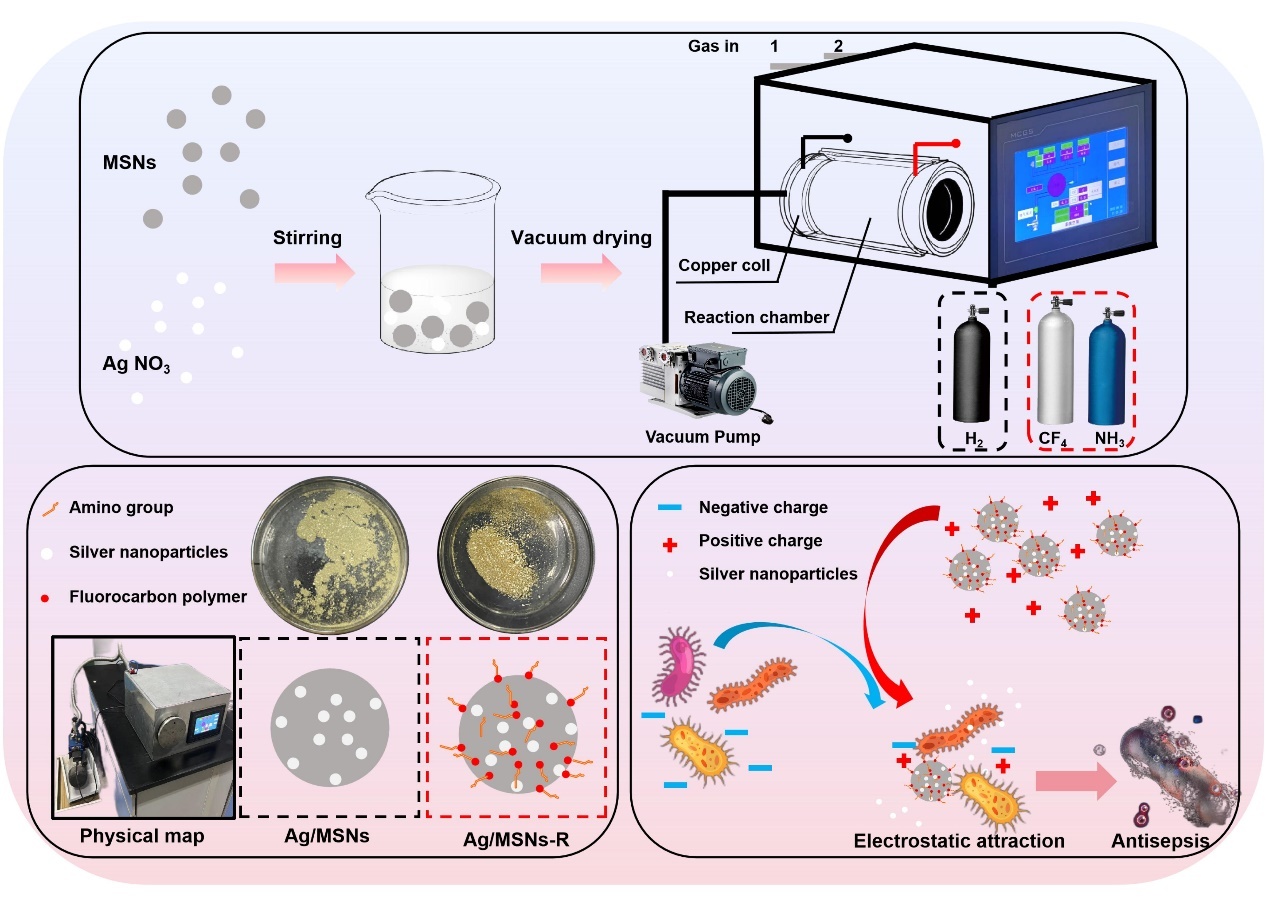
Researchers NI Guohua and SUN Hongmei from the Hefei Institutes of Physical Science of the Chinese Academy of Sciences, together with Associate Professor WANG Dong from Anhui Medical University, have developed a new two-step plasma strategy that enhances the antibacterial performance of mesoporous silica–supported silver nanoparticles and accelerates wound healing.
Their findings were published in the Chemical Engineering Journal.
Mesoporous silica-supported silver nanoparticles (Ag/MSNs) have great potential for wound healing due to their strong antibacterial activity and low toxicity. However, their negatively charged surface repels bacteria, lowering antibacterial efficiency. Traditional ways to add positive amino groups often suffer from uneven distribution, poor stability, and complex procedures.
In this study, the researchers developed a two-step plasma strategy to engineer surface-functionalized silver/mesoporous silica composites (Ag/MSNs-R). In this method, silver nanoparticles were first deposited on MSNs through hydrogen plasma reduction. Then, a mixed plasma of CF₄ and NH₃ was applied to graft an amine-fluorocarbon polymer layer onto the surface. As a result, silver nanoparticles with an average diameter of about 6.25 nm were uniformly distributed, and the modified materials acquired a positive surface charge, enhancing their interaction with bacterial membranes.
Laboratory tests showed that Ag/MSNs-R reduced bacterial viability by more than 98% against both Staphylococcus aureus (Gram-positive) and Escherichia coli (Gram-negative), achieving antibacterial effects several times stronger than unmodified Ag/MSNs.
Animal studies further confirmed that the modified materials effectively suppressed E. coli infections, alleviated inflammation, and promoted faster wound healing through the Arginase-1 signaling pathway.
This work provides a new approach for grafting functional groups onto silica and opens new possibilities for designing safer and more effective antibacterial materials for medical use.

Schematic diagram of the preparation and antibacterial mechanism of Ag/SiO2-R (Image by SUN Hongmei)

86-10-68597521 (day)
86-10-68597289 (night)

52 Sanlihe Rd., Xicheng District,
Beijing, China (100864)

